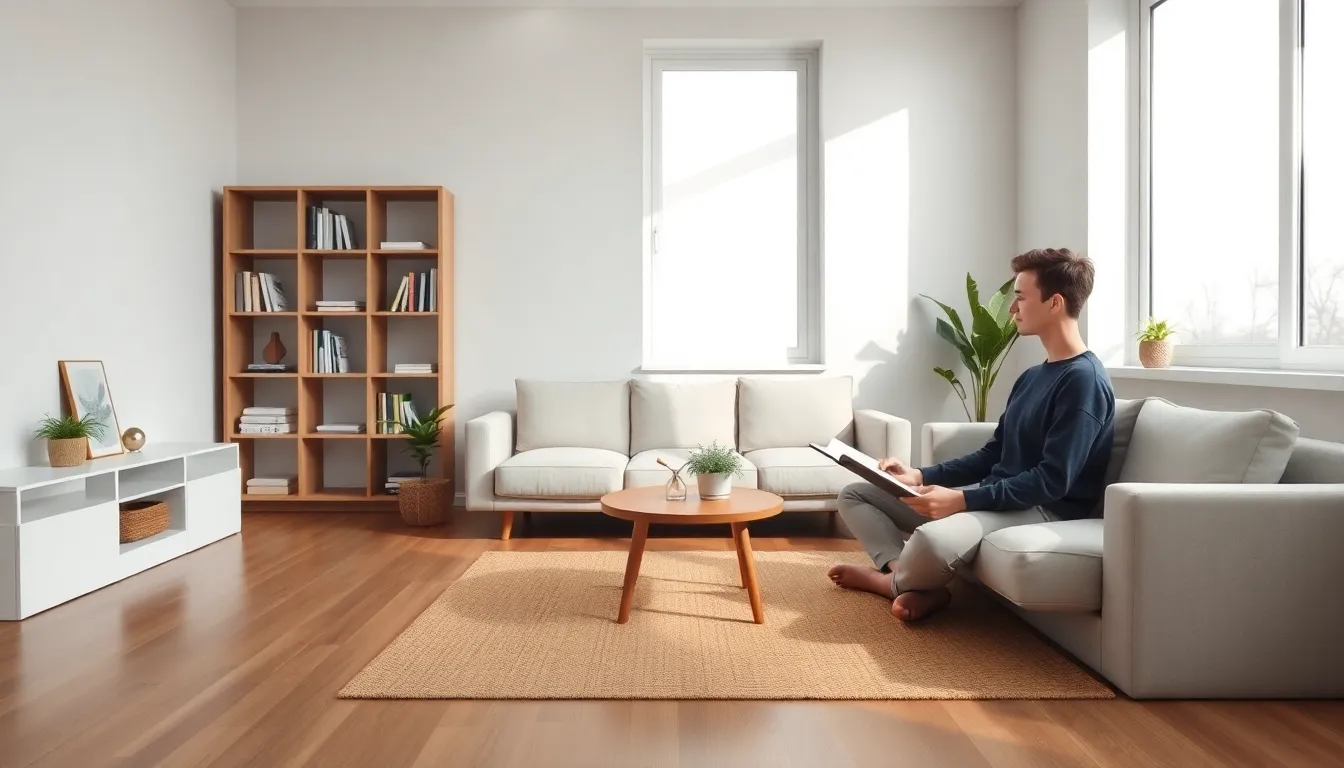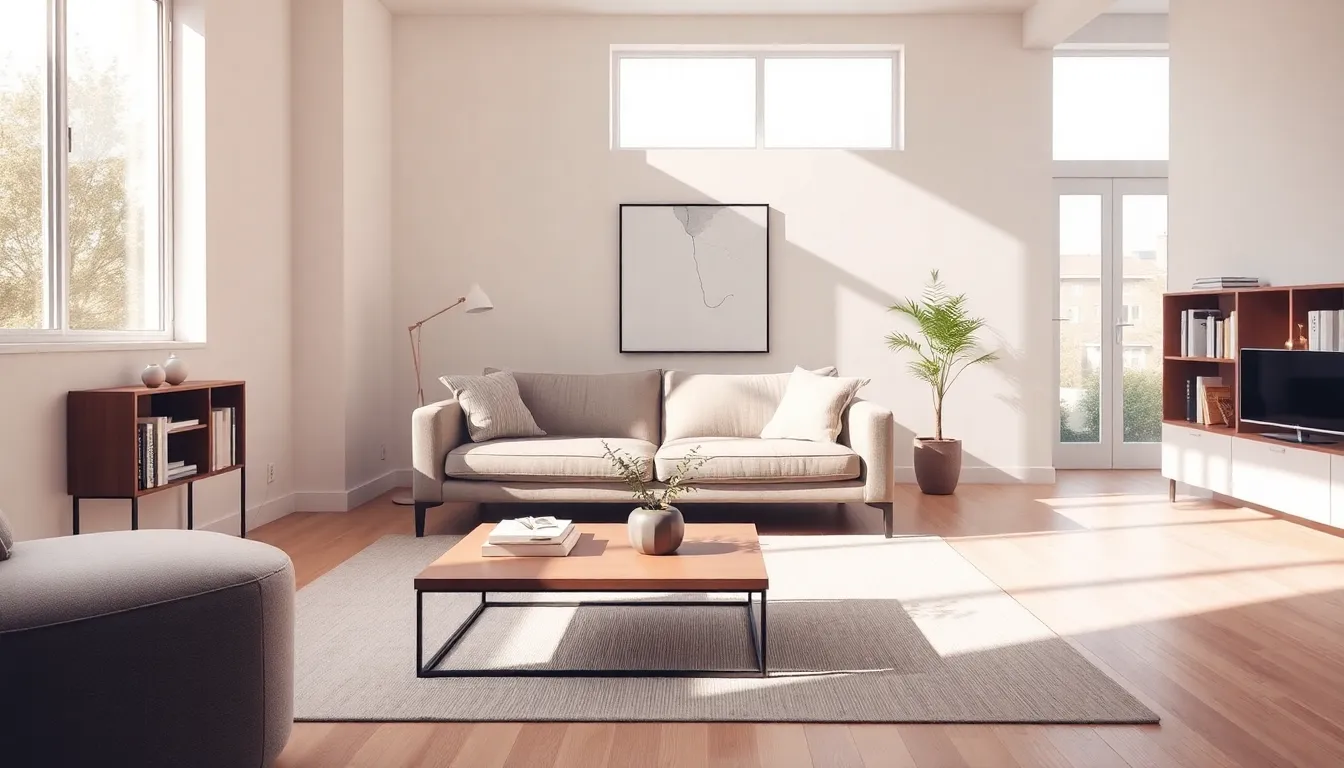In a world overflowing with choices, distractions, and material possessions, who wouldn’t want to throw their hands up and shout, “Less is more.”? Living minimalist might just be the secret weapon in an age where clutter, both mental and physical, seems to be the default setting. Imagine a life where your space breathes freely, your mind is clear, and each item you own sparks joy like a caffeine boost on a Monday morning. This article takes a jump into the minimalist lifestyle, revealing why it might be the right choice for anyone looking to reclaim their peace of mind, and maybe even some closet space. Ready to pack up the chaos and simplify your life? Let’s get started.
Table of Contents
ToggleWhat Is Minimalism?

Minimalism is not just a design trend or a nifty term for tossing out a few old clothes. At its core, it’s a lifestyle choice that emphasizes simplicity and intentionality. Think of it as editing your life down to what truly matters while sending the unnecessary clutter packing. Minimalism champions the concept of quality over quantity, encouraging individuals to focus on experiences rather than material things. It’s about creating space for what you value most, whether that’s quality time with family, pursuing hobbies, or simply enjoying a moment of peace without the nagging weight of distractions.
The Benefits of a Minimalist Lifestyle
Embracing a minimalist lifestyle brings along a myriad of benefits that extend far beyond having a tidy living room. For starters, less clutter naturally leads to less stress. Studies suggest that clutter can negatively impact mental health, leading to feelings of overwhelm and anxiety. On the flip side, minimalism encourages mindfulness. When one’s physical space is decluttered, it directly influences mental clarity. People often report feeling more focused and productive when surrounded by fewer items.
Besides, adopting minimalism can lead to significant financial savings. With a commitment to buying only what is necessary, individuals often find themselves saving money and spending deliberately. Minimalism has also been linked to a more sustainable lifestyle. By reducing consumption, individuals contribute to less waste, promoting environmental responsibility like a modern-day superhero.
Getting Started with Minimalism
Taking the leap into a minimalist lifestyle doesn’t require a complete overhaul of one’s life on day one. Instead, it’s more about adopting small, manageable changes that lead toward a simpler life. Let’s break it down.
Decluttering Your Space
The first step on this minimalist journey often involves decluttering. Start small. Choose one room or even a single drawer to clear out. The approach could include evaluating each item: Does it serve a purpose? Does it spark joy? If the answer is ‘no,’ it’s time to let it go. A great technique is the ‘one in, one out’ rule, if something new comes in, something must go out. This not only keeps clutter at bay but also makes one appreciate the items they own.
Creating a Minimalist Mindset
Decluttering isn’t merely a physical try: it’s a mindset. Begin by acknowledging the emotions attached to possessions. This may include letting go of items inherited from family or keepsakes that no longer serve a purpose. Also, practice gratitude for what remains. This shift in mindset can significantly enhance the experience of living minimally.
Tips for Maintaining a Minimalist Life
Transitioning into minimalism is one thing, but maintaining that lifestyle is another challenge altogether. Here are some helpful strategies to keep that minimalist flame burning:
- Regular Review: Conduct seasonal reviews of items and possessions. Just like spring cleaning, it’s essential to continually assess what is truly needed.
- Mindful Consumption: Before making any purchase, ask if it aligns with your minimalist goals. If it’s not a ‘hell yes,’ it’s probably a ‘no.’
- Digital Declutter: Don’t forget about digital clutter. Keep your digital space organized by unsubscribing from emails and deleting unused apps.
- Community Support: Surround yourself with like-minded individuals who support your journey. Whether online or in person, sharing tips and experiences can be inspiring.
Challenges of Minimalism and How to Overcome Them
Like any lifestyle change, minimalism isn’t without its hurdles. One common challenge is the emotional attachment people often feel toward their belongings. Overcoming this calls for a conscious effort to reflect on what items mean and their actual role in one’s life. Engaging with the decluttering process as a journey rather than a chore can help ease this emotional burden.
Another challenge might involve societal pressure. In a culture that often glorifies excess, it can feel odd to embrace simplicity. But, engaging with a community of fellow minimalists can help reinforce the validity of this choice. Connect with others through forums, social media, or local meetups to gain encouragement and inspiration to stick to the minimalist path.







